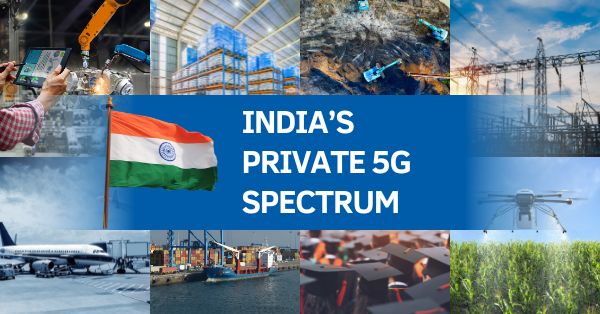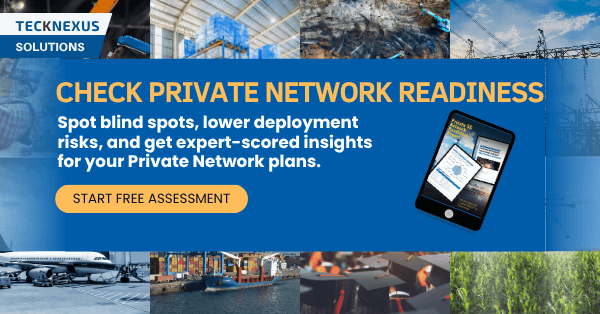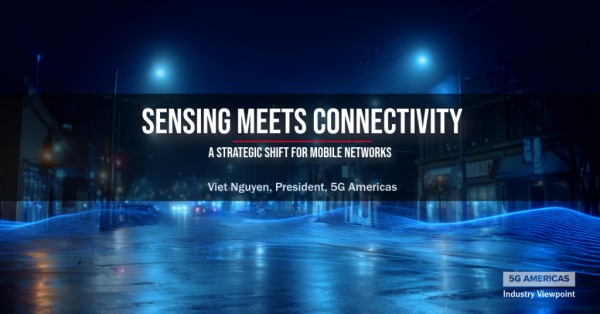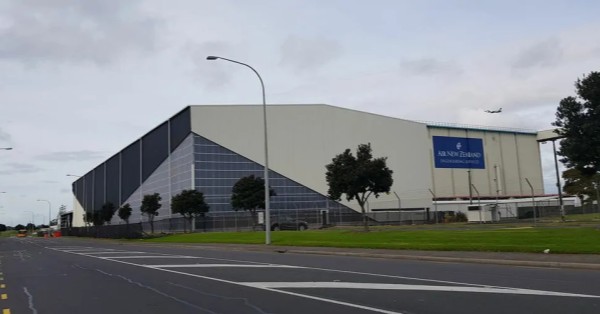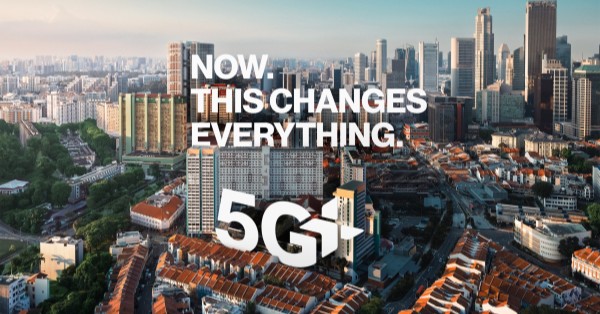Home » Transportation
Transportation
Essential insights and practical tools for navigating private networks. Get Details.
Available on Amazon & Google Books
Subscribe To Our Newsletter
- Tech News & Insight
- July 2, 2025
- Hema Kadia
- Tech News & Insight
- July 1, 2025
- 5G Americas
- Tech News & Insight
- June 27, 2025
- Hema Kadia
- Usecase
- June 23, 2025
- Hema Kadia
- Usecase
- June 23, 2025
- Hema Kadia
- Usecase
- June 23, 2025
- Hema Kadia
- Tech News & Insight
- May 15, 2025
- Hema Kadia
- Tech News & Insight
- May 9, 2025
- Rohit Nambiar
- Tech News & Insight
- April 29, 2025
- Hema Kadia
- Tech News & Insight
- April 21, 2025
- Hema Kadia
HOW 5G IS TRANSFORMING TRANSPORTATION INDUSTRY?
What are the current challenges of transportation systems?
The challenges of current transportation systems include the high cost of maintaining and operating and the need to reduce traffic congestion and air pollution. Additionally, these systems must be able to accommodate the growing number of passengers and cargo.
What is smart transportation?
Smart transportation is a term used to describe a variety of different systems, ranging from intelligent traffic management to autonomous cars. These systems use technology to make transportation safer, more efficient, and more environmentally friendly. Some examples of smart transportation are
- Intelligent transportation systems (ITS), which uses sensors and communication systems to manage traffic
- Advanced driver assistance systems (ADAS), which use sensors to help drivers avoid collisions
- Autonomous vehicles, which use artificial intelligence and sensors to navigate without human input
What technologies can make transportation smarter? How can 5G make transportation smarter?
Some technologies that can make transportation smarter are the Internet of Things (IoT), big data, artificial intelligence, and 5G. These technologies can help make transportation more efficient and effective because they allow more data to be collected and processed in real time. This can help vehicles communicate with each other and with infrastructure, making the system more efficient and safer.
For example, the Internet of Things can help connect vehicles and transportation systems to communicate with each other. This can help to improve traffic flow and reduce congestion. In addition, big data can be used to analyze transportation data to identify trends and optimize routing. And artificial intelligence can be used to predict traffic congestion and recommend alternate routes.
5G will play a big role in transforming the transportation industry. With its ultra-low latency and high bandwidth, 5G can connect vehicles and infrastructure to create a smart, interconnected transportation system. In addition, 5G, with much higher bandwidth than current cellular networks, makes it better suited for quickly transmitting large amounts of data. This is important for things like video streaming and real-time updates from traffic sensors and other sources. 5G is also more reliable than current networks, meaning it will be less likely to drop connections or experience other interruptions.
Finally, 5G is expected to be much more energy efficient than earlier technologies, which could lead to longer battery life for devices used in ITS applications. This will make transportation safer, more efficient, and more sustainable.
What are the top 5G for transportation applications and use cases?
5G for Connected Cars
A connected car is a car that is able to connect to the internet. This allows the car to communicate with other cars on the road and with infrastructure like traffic lights and stop signs. Connected cars can also receive updates and notifications about traffic conditions, accidents, and other disruptions. 5G provides faster data speeds and more reliable connections, which is important for connected cars, as they rely on transmitting large amounts of data quickly and reliably. In addition, with 5G, connected cars will be able to communicate with each other, and traffic management systems to optimize traffic flow and prevent accidents.
Deutsche Telekom (DT) and the BMW Group are using Personal-eSIM and MobilityConnect to link vehicle connectivity with the customer’s mobile 5G network for the first time on a 5G basis. MobilityConnect offers DT and BMW customers new, intelligent connectivity services in their vehicles. For EUR 9.95 per month, residential customers can add the MobilityConnect option to an existing mobile communications contract in Germany. Similarly, in the US, T-Mobile postpaid customers can add Magenta Drive for BMW for $20 per month. More details are DT and BMW Connected Car Use Case.
AT&T and General Motors (GM) plan to make 5G connectivity available in select GM models in 2024. Network enhancements will include the following:
- Improved roadway-centric coverage
- Faster music and video downloads with higher quality
- Faster, more reliable, and secure over-the-air software updates
- Faster navigation, mapping, and voice services
When launched, GM will provide access for its strategic partners to connect over AT&T’s 5G network, raising the bar for the interoperability and scale necessary to deliver future mobility services, such as e-commerce, smart city, and vehicle-to-electric grid. More details are AT&T and GM 5G connectivity for cars
5G for Advanced Driver Assistance Systems (ADAS)
Driving can be dangerous, especially on busy city streets or the highway. Nearly 1.3 million people die in car accidents yearly, many of which are due to driver error. Advanced Driver Assistance Systems (ADAS) is a suite of technologies that helps drivers stay safe on the road. ADAS can include features like lane departure warnings, blind spot monitoring, and collision avoidance systems. These systems can help you avoid accidents and keep you and your passengers safe.
Some of the ADAS features, such as automatic emergency braking, are in 30% of all cars, whereas 13% come standard with Lane Keeping As.+3jmcgAdaptive Cruise Control is standard on 11% of cars as per AAA. Automakers are making ADAS features standard on their future vehicles. On the other hand, it will still be a few years before vehicles are capable of autonomous driving.
Though ADAS is a critical part of the modern car, it’s limited by the speed and bandwidth of 4G networks. 5G can improve ADAS in several ways. First, it can provide faster data transmission for real-time processing of video data and features like real-time map updates. Second, it can provide more reliable connections for vehicles traveling in close proximity to each other to avoid a collision. In short, 5G makes ADAS faster, smarter, and safer. Car manufacturers are already preparing for the switch to 5G.
5G Automotive Association (5GAA) and eight-member companies conducted a live trial of a new driver and pedestrian safety concept that allows near-real-time notification of roadway hazards through 5G and edge technologies in Blacksburg, Virginia (VA) and Turin, Italy. The connected car concept uses high-speed and edge computing technology to communicate with car sensors and pedestrian smartphones via a user-authorized mobile app—about traffic hazards, like accidents and road construction—for Pedestrian and in-vehicle driver safety and efficient navigation. More details are 5GAA – Connected Car using 5G and Edge Technologies in Blacksburg, Virginia (VA) and Turin, Italy
5G for Connected Seaports
Seaports are the backbone of global trade. They are the gateway through which most of the world’s traded goods pass. To ensure that seaports maintain their efficiency and keep up with increased demands, they must constantly update their systems and processes.
One way they can do this is by implementing 5G technology, in conjunction with sensors, Global Positioning Systems (GPS), advanced communications systems, and information and communication technologies (ICT) to make the movement of goods more efficient, reducing wait times and improving safety, i.e., transforming the ports into connected/smart seaports. 5G can help improve seaport operations by providing faster, more reliable connections between ports and the shipping industry. This will allow for better communication and collaboration between all parties involved in the shipment process, leading to a smoother, more efficient flow of goods.
Brasil Terminal Portuário (BTP), one of the largest container terminal operators in South America with operations in Brazil’s Santos port, is advancing the digitization of its operations with the implementation of a private 5G network. The dedicated network is being deployed using spectrum held by Brazilian mobile carrier TIM, with network equipment and solutions provided by Nokia. More details are Brasil Terminal Portuário (BTP).
British Telecom (BT) will deploy a private network at the northeastern port of Tyne in Britain and is expected to go live later this year. The private 5G network will provide fast and low latency connectivity across the port’s facilities. The quayside operational optimization program and OCR container tracking are the two use cases prioritized for immediate deployment. Both the use cases will significantly enhance supply chain efficiency for the port of Tyne customers with the installation of black box monitoring devices on cranes and other materials handling equipment to record usage patterns and enable a detailed performance analysis for continuous improvement programs. The OCR container tracking application will inspect the condition of containers and monitor entry and exit to the port. More details are Port of Tyne.
5G for Connected Airports
Smart airports are those that are designed to be more efficient and less costly to operate. They typically have features like automated baggage handling systems, self-service check-in kiosks, and directional signage that help passengers get to their gates quickly.
Potential Disruption Risk to Aviation from 5G C-BAND – The Federal Aviation Administration (FAA), with key stakeholders in the aviation and wireless industries, has identified a series of steps that will continue to protect commercial air travel from disruption by 5G C-band interference while enabling leading operators to enhance 5G based service around certain airports. The agreed-phased approach requires operators of regional aircraft with radio altimeters most susceptible to interference to retrofit them with radio frequency filters by the end of 2022. At the same time, the FAA worked with wireless companies to identify airports around which their service can be enhanced with the least risk of disrupting flight schedules. Read recent updates on the FAA website.
Boingo launched a private network over the Citizens Broadband Radio Service (CBRS) spectrum at Chicago O’Hare International Airport (ORD). The private cellular solution securely connects IoT devices at ORD and powers essential airport services. Prioritizing touchless experiences, ORD activated a virtual customer service center at its Traveler’s Aid Station that required a dedicated wireless network to facilitate communications between on-site passengers and remote support staff via a live video kiosk. More details are CBRS at ORD airport.
Ahead of the private cellular trend, in 2018, Boingo Wireless deployed a private LTE network on the CBRS band at Dallas Love Field Airport (DAL) to streamline airport operations. The private network was designed to operate with maximal radio resource utilization, expanding wireless coverage and capacity at DAL. Boingo networks leveraged CBRS’s mid-band spectrum to deliver seamless and secure connectivity in dense, high-trafficked areas and is more cost-effective than networks relying on licensed spectrum. More details are CBRS at Dallas Love Field Airport.
5G for Connected Railways
A connected railway system is a railway management system that uses data from sensors and other sources to optimize traffic flow and increase rail operations’ efficiency. It can operate without human input, monitor the condition of the trains and track, and make decisions about when to run trains and how to route them.
Railways can use 5G technology to manage their trains and operations more effectively, improving punctuality and reducing congestion on the network. By coupling 5G with big data and the internet of Things (IoT), railway operators will be able to gain a real-time understanding of how their networks are operating, allowing them to make better decisions about train timetabling, routing, and maintenance. Additionally, 5G can provide real-time information about track conditions and weather updates to keep passengers safe. This will have a positive impact on passengers, who will also see an improvement in punctuality and a reduction in delays.
Inquire about our “5G for transportation” research report for additional industry use cases.
How can 5G technology bring efficiency and security to the transportation sector?
As we edge closer to a hyperconnected world, 5G technology emerges as a pivotal force in shaping our future, particularly in the realm of transportation. So, what are the key benefits 5G provides for future transport centers?
Superior connectivity and streamlined operations. Transportation centers, which serve millions of travelers every day, depend on high-speed, reliable connectivity for a multitude of services — from tracking bags to processing tickets. The rapid transmission and low delay of 5G ensure continuous communication and swift data sharing among devices, paving the way for instant updates and operational streamlining. This translates to faster boarding, more thorough security checks, and a better overall customer experience.
Effective traffic and congestion management. Managing the flow of people and vehicles is a complex challenge for transit hubs. 5G can introduce cutting-edge technologies such as IoT sensors and AI-driven analytics into the infrastructure, offering insights to tackle these issues. These tools can observe crowd sizes, track movement, and assess traffic in real-time, allowing for smarter decision-making, operational optimization, and improved crowd control, all of which contribute to reduced waiting times and heightened safety.
Advanced integrated transportation systems. The complexity of transit hubs, where different modes of travel meet, calls for sophisticated and interconnected systems. With 5G, hubs can evolve into smarter entities, providing travelers with the latest updates on schedules and potential delays via mobile apps, digital displays, or AR interfaces, ensuring a smooth and stress-free journey.
Support for autonomous transit and drones. A key transformation driven by 5G is its support for autonomous vehicles and drones within transit hubs. High-speed, responsive 5G connections allow for the use of self-driving shuttles, taxis, and delivery vehicles, facilitating efficient navigation and reducing both congestion and pollution. Similarly, drones for monitoring, security, and logistics can safely be integrated into hub operations thanks to 5G.
Enhanced safety and security measures. The safety and security of travelers are of utmost importance at transit hubs. 5G can bolster these areas with real-time video monitoring, facial recognition, and biometric systems, enabling security teams to react quickly to any potential threats and maintain a secure environment. Furthermore, 5G-enabled IoT devices can help in monitoring baggage, preventing theft, and ensuring bags are correctly matched with passengers.
The trajectory of transportation is deeply connected with the capabilities of 5G, and adopting this advanced technology is essential to unlocking its full potential. The scalability, adaptability, and high performance of these systems are key to realizing the benefits of 5G in these vital transport settings.
How Can 5G Transform the Future of Supply Chain and Logistics?
Global shortages in various commodities highlight the critical nature of supply chains, which connect manufacturing, transport, and logistics to deliver goods where they’re needed. In response to these disruptions, the industry is turning to 5G technology to enhance supply chain performance, improve safety, and manage operational risks, such as ensuring driver safety and securing assets.
Communication and Data Management: For those involved in the transport and logistics (T&L) sector, clear communication and data management are essential for the smooth transfer of goods. 5G networks are expanding the capabilities of T&L technologies, allowing for instant communication with supply chain partners. This high-speed communication is vital for maintaining operations at peak efficiency and ensuring the safety of all participants in the supply chain.
Data-Driven Decision-Making: The T&L sector is evolving with increased demands for real-time information and sophisticated technologies. Organizations use 5G to analyze and utilize data for making informed decisions in real time, enhancing visibility, and providing predictive analytics. Such data-driven insights can significantly increase the value of digital transformation initiatives.
Optimizing Fleet Management: Data collected from various supply chain segments can optimize fleet management. 5G facilitates the analysis of this data to refine operations, such as optimizing routes and fueling times. Innovations like vehicle-to-infrastructure (V2I) technologies improve traffic management, leading to faster delivery times and increased fuel efficiency.
Enhancing Safety: Safety is paramount, especially for drivers handling large vehicles or hazardous materials. 5G’s high-speed connectivity and low latency improve the delivery and analysis of data from sensors, enhancing safety solutions. For instance, machine learning can forecast weather conditions, and onboard systems can promptly alert drivers to road hazards.
Supply Chain Automation: Automation in T&L includes drones for delivery, robotics for warehouse operations, and process automation to boost efficiency. 5G can facilitate immersive on-the-job training using augmented or virtual reality and enable remote maintenance, allowing for continuous fleet operation. Over time, automation will increasingly safeguard drivers and automate the transfer of goods.
Foundation for Future Innovation: 5G will be foundational for future innovations in the T&L industry, with its ability to support dense connectivity crucial for industrial IoT applications. It will enable smart infrastructure and vehicle automation, making road travel safer and operations more efficient. Investing in 5G-powered intelligent transportation technology is essential for shaping the future of T&L.
Whitepaper

Whitepaper

Article & Insights

Download Magazine
Subscribe To Our Newsletter
Executive Interviews
Brand Connect
Amplify Your Brand & Boost Your Business
- Thought-Leadership Management
- Magazine Article
- Executive Interviews
- Whitepapers
- Research Reports
- Custom Research
- Blog Series
- Webinars
- Podcasts
- Advertorials
- Display Ads
- Event Partnership



